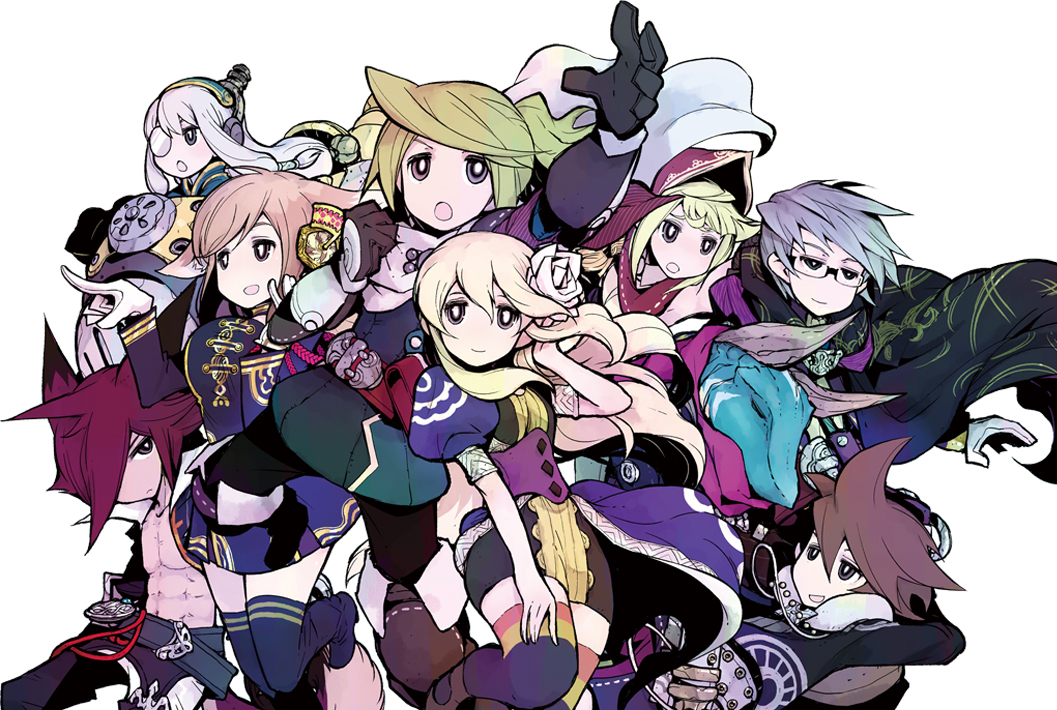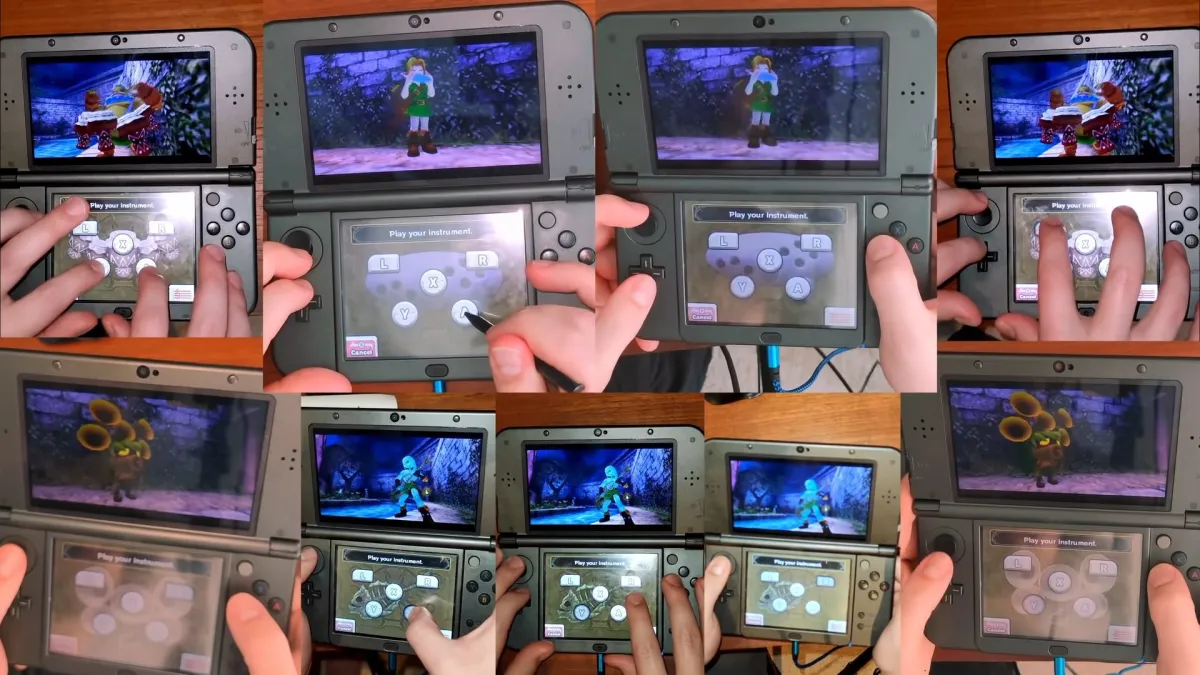Adventure like it’s 1995!
Cattle Call’s The Legend of Legacy should have been one of the 3DS greats. Director Masataka Matsuura assembled several of the best game designers of Japan, bringing together artists, writers, and musicians who crafted some of the greatest games of all time. But like the 2003 Lakers, all of that talent couldn’t produce when it mattered the most.
Three years later, The Alliance Alive is here to fix all the problems of that last game. When measured head-to-head, Cattle Call’s new game is clearly superior and a step in the right direction for the developer. The only problem is it’s too small of a step.
The Alliance Alive (3DS)
Developer: Cattle Call
Publisher: Atlus
Released: March 27, 2018
MSRP: $39.99
It doesn’t take too many hours of adventuring through The Alliance Alive to see what developer Cattle Call is going for. It’s a mix of old and new, melding the tried-and-true storytelling concepts that carried the JRPG genre through the ’90s with more experimental ideas on what it means to be a role-playing game.
The narrative and central cast are the highlights of the game. After trying and failing to develop a compelling campaign with Chrono Trigger scribe Masato Kato in its previous title, Cattle Call’s decision to bring aboard Yoshitaka Murayama of Suikoden fame proves to be a smart one. Murayama, along with the outstanding localization team at Altus, crafts a memorable campaign that fits fine with the 16-bit JRPGs of my youth.
Taking place in a world split into different realms after a Human vs. Daemon war 1,000 years prior, Alliance follows three teams led by characters who are the driving force to change this fractured world. There’s Azura, who dreams of seeing a blue sky having lived her entire life in the Rain Realm — and no, the realm names don’t get any more creative than that. She’s joined by childhood friend Galil who is the face of the campaign though not necessarily its central protagonist. Another group that starts off exploring the Burning Realm is headed by Vivian, a Daemon obsessed with Professor Altein, a spunky human scientist who drives a giant robot duck. Finally, there’s Gene, a human signimancer who conducts covert missions for his Daemon overlords. Each has an inkling of an idea about what is really going on in the world and after exploring three realms over 10 hours, the three teams join up to erase the Dark Current that separates these worlds.
The dozen or so hours that follow provide ample development for the central characters of the tale but leave a handful of the team behind. It would have been nice to see Renzo or Barbarosa get a bit more screen time, but their presence is sacrificed in favor of a succinct story. When it is at its best, The Alliance Alive is a rollicking adventure. At its worst, when the linearity of the opening hours gives way to an open world freckled with points of interest to explore and new cast members to meet, it can be a bit a slog trying to figure out what to do and where to go.
Like the games of old, The Alliance Alive keeps me on track by dotting the land with incredibly difficult enemies if I’m somewhere I shouldn’t be. Those encounters are rare. In fact, the game is too easy for most of it, major boss battles included, and a big part that is combat. There are neither levels nor experience points to bother with in this game. Rather, it’s the attacks characters have available that become stronger with each use. Every character can equip two weapons from seven available — or go unarmed which is a viable option as well — and new attacks are learned during the throes of battle. Characters can become proficient with all weapons but I find it’s better to focus on just one or two. I can equip a character with two of the same weapon, an ideal strategy for handling Final Strikes.
During a battle, depending on conditions, a character will use Ignition which allows them to attack with a Final Strike on their next turn. These attacks do massive damage at the cost of the weapon itself. Whether I kill the enemy or not with a Final Attack, my weapon breaks at the end of my turn. I cannot equip new weapons during battle or even use items that I don’t equip beforehand — making healing a bit of a nightmare in this game — which is why for several of my characters I opt to equip them with two of the same weapon they’re most proficient with. That way once a weapon breaks, I can still use the attacks that are the strongest for each character.
One of the combat concepts I find most interesting here has to do with health. There are two types of health in the game: current health and maximum health. Let’s say I have Galil with 176 HP and in battle, he falls to zero. He’s not gone and I don’t use a revive to bring him back. Rather, when a character falls to zero, they’re just knocked out and can be healed with medicine or a simple heal spell. However, if I don’t heal a character, enemies can still attack them while they’re down and lower their maximum health. So if Galil falls to zero and enemies keep pounding him, his maximum HP will no longer be 176. It will be whatever it is when I win the fight. Current health is restored after each battle but maximum health can only be restored at an inn or another designated sleeping spot.
Victory in battle (slowly) bestows Talent Points to my team I can use to increase their expertise with weapons as well as the limited magic available. I don’t unlock new attacks or spells with Talent Points, but I can make it easier for my squad to learn them. I can further improve the effectiveness of my arsenal by organizing my team most efficiently on the 3×5 battle grid. Character placement is essential as some multi-hit attacks will only snare multiple enemies if my character is lined up in the right spot. I can’t move my characters during battle or just place them where I want on the grid. Instead, I have to create new grid formations at the Tactics Guild.
Tactics is just one of five guilds in the game, each with their own specialty. Blacksmith Guild makes new weapons and armor, Library Guild is for research, Recon Guild keeps monster counts low, and the Signimancy Guild creates new spells for my non-Daemon magic users. In each realm, I need to make pacts with these guilds or construct new guild halls and staff them with NPCs I recruit throughout my journey. In battle, if I am close enough to a guild hall, they can assist me but this feature never seems to work at the times I want it to. Super annoying and easy battle with a pipsqueak monster? The guild is ready to attack. Drawn-out and difficult fight against monsters with five-digit health? Guild moseys on over halfway through battle when three of my characters on the brink of “Game Over” death.
The system is undercooked and it’s not the only part of The Alliance Alive that is. Despite the varied attack grid designs I can create, the combat’s pretty damn shallow. Magic, at least the human signimancy flavor, is weak and a bit of a grind to learn. I mostly just brute-forced my way through the game. Battles aren’t random, but enemies will always attack no matter how out matched they are. I can never tell how weak an enemy is because there are no health bars, meaning I don’t know if I’m in over my head until after I do 2,000 points of damage to a single monster and it doesn’t fall. No problem if I can flee from battle, but that’s not always a possibility with battle chains.
If two or more enemies are chasing me in the overworld and one of them catches me, the other(s) may become part of a battle chain where I fight each enemy one right after the other without the automatic post-fight heal. 95% of the time these aren’t a hassle, but because I can’t flee during these chains, I wind up spending a few minutes in a series of battles I have no chance of winning when I wander to a part of the map I’m not supposed to be in yet.
Despite the insurmountable odds, those overwhelming battles keep me on my toes. The rest of the time it’s too easy to become bored of the combat. This absolutely has to do with the fact every monster on the map always attacks, but also because there’s a lack of production value here. There isn’t always separate battle and victory music. Most of the time it’s just the overworld theme playing through each and every fight. There is no voice acting, which is fine, but there’s also no sound effects when characters speak. It makes for a weirdly silent game, though I guess it just gives me more opportunity to enjoy the limited soundtrack. I just wish I could enjoy the look of the game.
For all its faults, The Legend of Legacy crafted a unique pop-up visual style that went above and beyond what everyone else was doing at the time. It wasn’t top of the line, but certainly dynamic and memorable. That visual concept is gone, replaced with a standard, drab overworld and towns that don’t really do the watercolor palette justice. There’s fleeting beauty to be found, but the game as a whole has the appearance of a Bravely Default knock-off. I actually like the steampunk Precious Moments character design and most everything in the battle sequences is fine, but exploring the vast, empty realms with the ugly map monsters has me dreaming about how good this game could be if it had a bigger budget.
The story and characters of The Alliance Alive will stay with me far longer than anything else in the game. Yoshitaka Murayama has proven ’90s-style storytelling is still as enrapturing today as it was two decades ago. His work just needs to be paired up with a better game. I respect all of the new gameplay ideas present here, but without fine-tuning, they bring down what should be one of the last great 3DS games.
[This review is based on a retail version of the game provided by the publisher.]







Published: Mar 26, 2018 05:00 pm